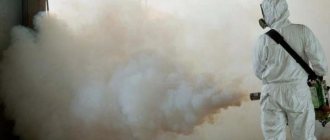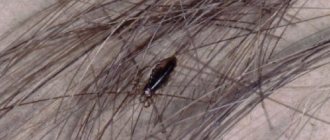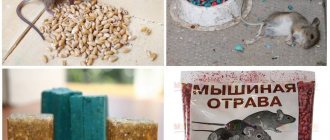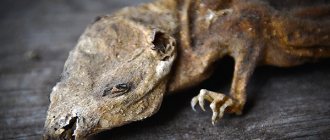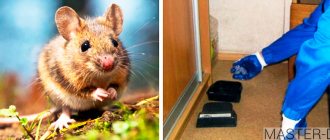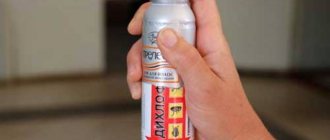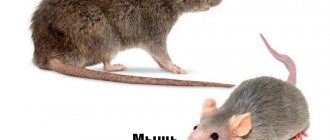Classification of poisons for rats and the principle of their action
Poisons can be used both indoors and outdoors. They are produced in the form of powder, granules, gel, grain, liquid, steam or gas, tablets, briquettes. Also, the poison can be with or without a smell, and have a different color. It must be remembered that rat poison can be dangerous not only for rodents, but also for humans.
Rats most often appear in sheds and other outbuildings
By composition
According to this criterion, poisons are divided into:
- inorganic. They contain metal compounds such as aluminum, lead and thallium salts. This makes them dangerous to humans and the environment, so they are almost never used. The exception is that rats have immunity to other poisons. Death of rodents occurs when large doses of the substance enter the body;
- organic. They do not require the use of large doses. They are safer when compared with inorganic poisons.
By method of penetration
Poisons for rats can enter the rodent’s body in different ways, so the following groups are distinguished:
- intestinal poisons, entering the pest’s body along with food, cause poisoning;
- contact ones penetrate the rat upon contact with them. They can cause burns or closure of the airways;
- fumigants poison the air. The poison enters the body by inhaling vapors or gases. Fumigants are presented in solid (paradichlorobenzene), liquid (dichloroethane), and gaseous (sulfur dioxide) form.
The poison can enter the rat’s body through the stomach, respiratory system or skin
By validity period
Not all poisons immediately poison a rat, so they are divided into:
- immediate acute action. The poison, entering the stomach, almost immediately causes the death of the rodent;
- long-term and periodic action. The speed of action depends on the amount of the substance in the body; it usually takes 1–2 weeks. These drugs include anticoagulants - substances that thin the blood and prevent the formation of blood clots. This means that the rodent will die from internal bleeding. Such poisons contain mummifying substances that prevent the body from rotting, but dry it out.
The poison must be selected for the rodent and the type of area
Anticoagulants of different generations
Anticoagulants are classified into a separate group. They are divided into drugs:
- the first generation is less effective because they are not immediately absorbed and require large doses. These drugs include: “Warfarin” (“Zookoumarin”);
- "Difenacin" ("Ratindan");
- "Trifenacin" ("Geltsin");
- "Chlorfasinon" (briquettes from rats "Ratidion-HF");
- "Kumatetralil" (Rakumin powder).
- "Flocumafen" ("Goliath");
Anticoagulants provoke internal bleeding, which is why the rat dies
Consequences of human poisoning with rat poison
Consumption of rat poison quite rarely leads to the death of the victim, but the negative consequences of poisoning can manifest themselves for a long time, and in the worst case, accompany the person for the rest of his life. The most common complications:
- inflammatory diseases of the digestive system (pancreatitis, cholecystitis);
- renal failure;
- liver failure;
- toxic hepatitis;
- hemophilia.
Problems with blood clotting can manifest themselves in frequent nosebleeds, bleeding gums, and excessive bleeding even in the case of small wounds on the skin. Internal bleeding is also possible.
Popular rat control products
You can purchase poison at any specialized store. When choosing, you should be guided not only by price, but also by other characteristics.
"Ratsid"
This is a highly toxic product (it is not fatal to humans, but precautions must still be taken). The lethal dose for a rodent is 20–25 mg. After eating food with “Rat”, the rodent dies from suffocation within 12–72 hours. If the poison does not work, the rat will develop immunity. "Krysid" can be used in different ways:
- spray into holes;
- mix with bait (it should be placed 3-4 days after feeding with non-poisoned food);
- pour into water.
"Krysid" is toxic to rats and can also cause poisoning in pets
"Ratox" and "Commando"
They are made on the basis of zinc oxide. Such means are much more dangerous than “Ratsid”. When zinc phosphide enters the digestive system, it begins to react with hydrochloric acid, releasing highly toxic hydrogen phosphide, which kills the rodent.
Ratox cannot be used in residential areas
These products have a specific odor and can react even with air, so their use in residential areas is strictly prohibited.
Commando poison easily reacts with air
Prohibited poisons for rats
In addition to arsenic and strychnine, other dangerous poisons are known. These include products based on:
- thallium salts. This is “Celiopaste”, which is no longer for sale. Thallium sulfate is prohibited in some states;
- yellow phosphorus. Toxic agent that causes severe burns. Rodents die after eating the bait once. But the drugs are so dangerous that they are banned in all countries of the world;
- lead Their main disadvantage is that they are easily recognizable by rats, although they are effective.
When fighting rats, you should not use highly toxic poisons that can harm the environment and pets.
Rules of use, precautions
When living in a city apartment building, an effective method for exterminating rats is to simultaneously treat all apartments by specialists. It's reliable, convenient, safe.
If the need arises for an independent war against dangerous pests, then certain measures must be taken:
- Ensure that there are no people or animals in the room to be treated. When using liquid forms of drugs, you cannot enter the room for several days. After which it must be well ventilated.
- Use gloves and protective suit. The smell of a person, easily detected by a rodent, can scare it away. He won't eat the bait.
- Follow the dosage requirements specified in the instructions. Do not use drugs that have expired and are stored in unsealed packaging.
- Place all food items in safe places.
- Place poisons on a plastic plate, film, newspaper, along the path of maximum movement of animals, in places where food is located.
- Destroy corpses in a timely manner , keeping pets away from them.
- The number of bait sites used is determined by the size of the rat population that appears. If there is excess bait, it is burned and buried to a depth of at least 60 cm.
- If poison enters the human body , immediately call an ambulance.
Rules for preparing poison with your own hands
Folk remedies for rats are significantly inferior to industrial ones, so they are often used as additional ones. There are several ways to prepare poison at home:
- gypsum in milk. You need to mix them so that the consistency remains liquid. In the rat's intestines, the gypsum thickens and interferes with natural nutritional processes, which is why the rodent dies. You need to be prepared for the fact that animals are able to recognize this threat, so the remedy may be ineffective;
- quicklime with sugar. In the rat's stomach, the lime heats up and corrodes its walls. The method is not the most effective, but accessible. There is no confirmation of information about the effectiveness of this method, but minimal harm will definitely be caused to rats;
- cork shavings. It can be mixed with any porridge or animal food. May cause gastric obstruction;
- crushed glass. It needs to be added to the bait, preferably liquid. Glass will cause severe harm to the digestive and circulatory systems;
- chilibukha tincture. It is added to liquid bait. The tincture is poisonous due to the strychnine content, but rodents easily detect this remedy due to its strong odor, similar to garlic.
You can add rat poison to water or milk.
Appearance of poison
This question can be easily answered by those who have often encountered and poisoned rodents. But for those who are faced with such a problem for the first time, this is quite difficult.
There are several types of poison:
- powder;
- briquette;
- powder;
- pills;
- granules.
Also, the difference between poison is that some have a smell that attracts pests, and some are simply odorless; the color palette of the poison is also different.
Also, the use of poisons can be in two variations:
- Just sprinkle the contents of the bag (everything is already packaged in it, and you don’t need to calculate the proportions).
- Scatter it on the floor, after mixing it with some kind of bait.
It is very important to be absolutely attentive in this matter. Poisons are very dangerous to human health and pets.
Effective rat repellents that work in small areas
In small areas, for example, in a chicken coop, barn, car, it is better to use low-toxic products. It is recommended to choose odorless, unsightly substances, especially if this is a residential area, or to call professional deratizers (deratization is the process of eliminating rats and mice). One of the best remedies for small areas can be safely called “Nutcracker”. It has low toxicity for people and does not smell. The product causes 100% death of rats and mice within 4–8 days.
Nutcracker poison is low toxic to humans
The Nutcracker is also available in the form of a dough-like substance similar to plasticine.
An effective means of baiting rats over a large area
The main means of fighting over large areas are:
- bait houses. Food containing poison is placed in them. They place houses in places where there are large concentrations of rodents. When a rodent comes inside, the house closes;
- treatment of burrows with rodenticides (poisons in powder form). Particles of the product fall on the fur, and then when licked inside the animal;
- filling holes Rats can chew through most materials, even concrete. Therefore, it is better to cover the holes with metal sheets or a wall made of cement, shells and crushed glass;
- traps and traps. Most often they have a wooden base. It is difficult to catch a rodent with such devices; they can only be used in secluded places once, since rats leave their odors, warning their relatives of danger;
- carbonation. A poisonous gas based on hydrogen phosphide or carbon monoxide is sprayed into a closed room. This mixture does not harm food products and disappears quickly, leaving no odor.
Small size is deceptive as the rat can be fast and agile
How to avoid poisoning
To ensure that the advice in this article never comes in handy, follow these precautions when working with rat poison:
- Wear a change of clothes, rubber gloves, and a medical mask when laying out the bait.
- After the procedure, wash your hands and face thoroughly.
- Keep the poison out of reach of children.
- Warn household members or employees of the enterprise that deratization is being carried out, and inform them about the places where the poison lies.
- Keep a close eye on small children if they are playing near the bait.
- When processing a garden plot, make sure that the poison does not come into contact with vegetables and fruits. In any case, rinse food thoroughly before eating, because poison particles can reach them through animals.
If there are rats at home or in the country, then it is better to entrust deratization to trained and trained specialists. Then you will minimize contact with chemicals, and you will not have to store them at home. And in some cases, the best effect comes from biological methods of rodent control: just get a cat and the problem with mice will be solved.
Rules for treating premises from rats
Rats are smart and organized animals, and they may not react to bait and traps that are simply scattered around. These rodents live in groups. They send the weakest rat on reconnaissance. She checks baits, inspects the suitability of new territories, etc. Therefore, slow-acting poisons are the most effective. After 5–7 days, the rodents die without having time to “inform” their relatives about the danger.
It is necessary to decide which area is inhabited by rats and what they eat. When preparing poison, their diet must be taken into account.
First, you need to feed the rats regular food, and then gradually add poison. You need to be very careful if there are small children or pets in the room, as they may accidentally become poisoned. Place the poison in areas where rodents are active. You can find out about these places as follows. Sprinkle a little flour where they are likely to appear, and check the next morning to see if marks have been left. After this, you can already think through the tactics of placing the poison. For greater effectiveness, combine industrial remedies with folk ones. If poisonous baits remain untouched for several days, then the rats have sensed danger and will not consume your poison.
It is necessary to regularly treat the room from bacteria and traces of rodent activity, since they are carriers of diseases. Basic methods of disinfection:
- surface treatment with antimicrobial agents;
- removal of garbage and food products with which rodents have been in contact;
- heat treatment of textiles;
- use of antiseptics;
- maintaining personal hygiene.
It is also necessary to get rid of the dead rats. Do not touch them with your hands under any circumstances.
Video: how to properly treat rats
Chemicals
There are two types of baits for rodents: non-toxic (food) for luring the animal into a trap and poisonous, causing the death of the rat. When she swallows the poison, death can occur within a few hours or after a few weeks (depending on the remedy). Mice die faster than rats.
Caution must be exercised as some toxic baits can not only kill rodents, but also cause death in pets. All chemicals are divided into two categories based on speed of operation:
- Acute focus. The poison causes the blood to quickly clot, which leads to almost instantaneous death of the animal. Such products may contain organic components, such as strychnine or sodium fluoroacetate. It may also contain synthetic compounds: barium fluoroacetate, glyfluorine (such substances are most effective).
The most effective poison is one that causes instant death in the rodent after consuming the poison - Chronic. The death of the animal occurs only after a critical amount of poison has accumulated in its body. During this time, the work of all vital organs is disrupted and the mechanism of destruction is launched. Typically, the death of a rodent occurs within 2 weeks. The composition of such products includes dicumarol, kemochlor, diphenacin, phentolamine.
Each mouse and rat poison works differently. The method of action of the poison depends on the chemical element used, aimed at destroying a specific organ in the rodent’s body:
- Circulatory system. Chemical compounds thin the blood and promote the formation of hemorrhages, which lead to the death of the animal. Most often, these drugs include warfarin.
- Digestive system. The effect of the poison is associated with the peculiarities of the digestion of rats, which consists in the absence of belching. The poison will lead to exhaustion of the body and further death.
- Respiratory system. The composition of drugs that affect the respiratory system includes zinc phosphide.
- Nervous system. Toxic agents of this type contain arsenic, which leads to immediate damage to the nervous system.
- Bone. Its destruction occurs under the influence of varieties of drugs containing phosphorus.
This video shows how rats are poisoned with old chemical weapons:
There are also special mummifying preparations. They prevent animal carcasses from decomposing.
Poison release form
For convenience, rat poison is available in different forms. Each variety has its own advantages and disadvantages. On the modern market there are:
- Plastic briquettes. They are best suited for rats because they resemble meat (rats, unlike mice, love food of animal origin). Convenient to use. Briquettes are often produced in bright colors, this attracts the attention of rodents.
- Granules, also called pellets. In appearance they resemble dry dog food or compound feed. This variety is most attractive to mice, although rats can also eat this bait.
Poison in granular form is most attractive to rats - Grain soaked in poison. The properties are similar to the previous variety. Suitable for mice.
- Liquid baits. If there are no accessible sources of water in the room, such poison will be very attractive to rats. A significant disadvantage is that the placement is not very convenient. You will need a large bowl or saucer, while a small briquette can be placed even in a hard-to-reach place.
- Gels. Much like briquettes, except that they may leave stains on the lubricated surface after use.
- Powders. Not very convenient to use. They need to be added to food, making all kinds of bait yourself. Such substances must be handled very carefully, as they pose a danger to humans.
Professional companies sometimes use rodent poison in the form of gas or aerosols. However, this method requires a large amount of drugs and is only permissible in non-residential premises. Rat poison in the form of gas and aerosols is not available for home use.
Rat poison comes in a variety of forms, each differing in how attractive it is to rats and how it works.
There is an opinion that glue from mice and rats contains poison. This is actually a myth. Glue and various traps based on it do not kill rats, but simply hold the pest in place and prevent it from getting out.
Advantages and disadvantages
There are a large number of drugs for rodents, but before choosing an effective poison for rats, you should remember the advantages and disadvantages of this method. Advantages of using chemicals:
- Reliability. The product will be effective even with a single treatment.
- The ability to solve a problem even in difficult situations. Only in this case will you have to invite professionals.
Each method also has its drawbacks. The use of poison is no exception. These include:
- Toxicity of products.
- The need to strictly follow the manufacturer's recommendations and act according to the instructions.
- Preparing housing for processing. The entire family, as well as pets, must leave the premises. Thorough cleaning will be required after etching.
Recommendations for use
If the use of chemicals is unavoidable, it is imperative to study the safety rules. These drugs can be harmful to humans. When toxic substances enter the lungs, they poison the body. Moreover, careless handling of poison can lead to burns to the mouth and respiratory tract. General recommendations for work:
- In multi-storey buildings, it is best to use drugs that cause mummification of rodents (the corpses of animals emit a strong unpleasant odor).
In many apartment buildings, use poison with a mummification effect, then the rodent corpse will not decompose - The most effective and fastest way to remove rodents from an apartment building is the simultaneous disinfection of all apartments by a team of professionals. This is the safest, most convenient and reliable.
- It is necessary to guarantee the absence of people and animals in the area for processing. If liquid poison is used, you should not stay indoors for several days. After this, it must be thoroughly ventilated.
- You will need a protective suit and gloves. The human scent can deter rats from touching the bait.
- You should follow the dosage recommendations indicated in the instructions. Expired funds cannot be used.
- All food should be stored in a safe place.
- Baits should be placed on plastic plates, newspapers and film, in places where food was previously located.
- Corpses should be destroyed in a timely manner so that they are not noticed by pets.
- If poison enters the human body, you must definitely seek medical help.
